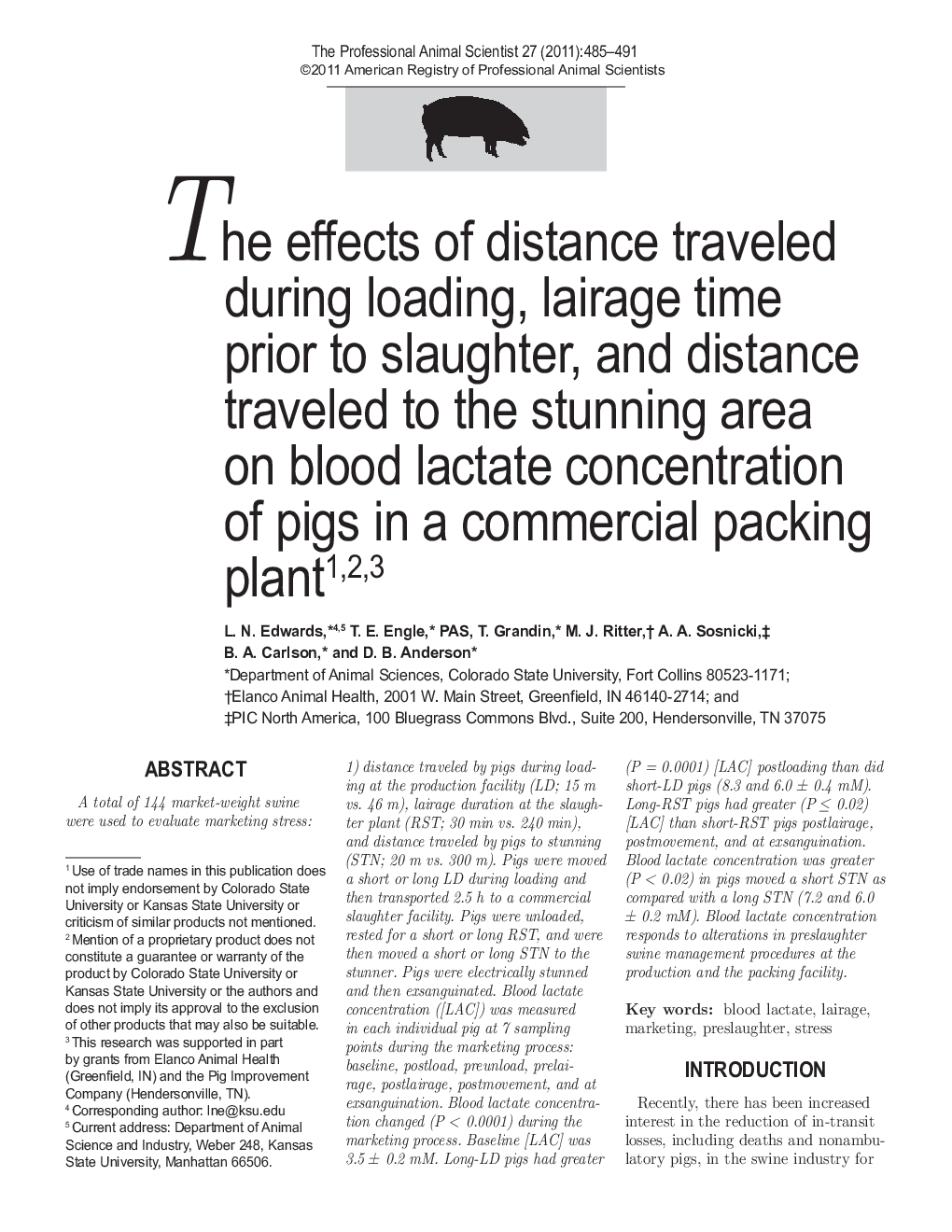| Article ID | Journal | Published Year | Pages | File Type |
|---|---|---|---|---|
| 2454057 | The Professional Animal Scientist | 2011 | 7 Pages |
Abstract
A total of 144 market-weight swine were used to evaluate marketing stress: 1) distance traveled by pigs during loading at the production facility (LD; 15 m vs. 46 m), lairage duration at the slaughter plant (RST; 30 min vs. 240 min), and distance traveled by pigs to stunning (STN; 20 m vs. 300 m). Pigs were moved a short or long LD during loading and then transported 2.5 h to a commercial slaughter facility. Pigs were unloaded, rested for a short or long RST, and were then moved a short or long STN to the stunner. Pigs were electrically stunned and then exsanguinated. Blood lactate concentration ([LAC]) was measured in each individual pig at 7 sampling points during the marketing process: baseline, postload, preunload, prelairage, postlairage, postmovement, and at exsanguination. Blood lactate concentration changed (P < 0.0001) during the marketing process. Baseline [LAC] was 3.5 ± 0.2 mM. Long-LD pigs had greater (P = 0.0001) [LAC] postloading than did short-LD pigs (8.3 and 6.0 ± 0.4 mM). Long-RST pigs had greater (P ⤠0.02) [LAC] than short-RST pigs postlairage, postmovement, and at exsanguination. Blood lactate concentration was greater (P < 0.02) in pigs moved a short STN as compared with a long STN (7.2 and 6.0 ± 0.2 mM). Blood lactate concentration responds to alterations in preslaughter swine management procedures at the production and the packing facility.
Keywords
Related Topics
Life Sciences
Agricultural and Biological Sciences
Animal Science and Zoology
Authors
L.N. Edwards, T.E. PAS, T. Grandin, M.J. Ritter, A.A. Sosnicki, B.A. Carlson, D.B. Anderson,
